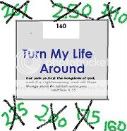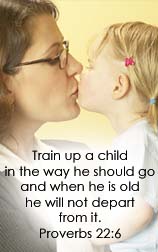Tabitha has been learning how to multiply, so when the opportunity arose through the Schoolhouse Review Crew to review a brand new game that focuses on multiplying and dividing, I thought we would give it a try. Sunya Publishing is a brand new company and they gave us the chance to review Sunya -The Magic and Wonder of Math and Science Multiplying & Dividing before it is even available to the public. They also have an Addition and Subtraction game, which is suited for children 7 and up. I admit, it was a bit of a toss up, because Amelia could have joined in with the Addition and Subtraction game, but I was at a point where I really wanted to work with Tabitha with her multiplication, so I chose to go with that version of the game, which is suited for children 9 and up.
We were sent the Teacher/Parent Guidebook, 2 sets of cards, and a number line. The first pack of cards consists of 60 number cards plus a wild card. As you can see, the number is represented three times on the card, once in the center, again in the corner, and below the center number by a group of dots. The other set of cards consists of 30 math and science fact and riddle cards. These cards are meant to expand ones mind, used after each round of play, so they aren't really essential to the actual game that is being played, but they are fun to read through and try to stump each other with.
The game itself is explained in the guidebook. Crew Members were sent a book that had some pages in color and others in black and white, so we could share our input on which we thought was better.
Personally, I preferred the colored version of the pages. To me, it seemed more professional and easier to read as it broke the page up. Also, because there are times the instructions refer to a color in the pictures, the colored pages would be necessary in order to find where the specified color was.
Unfortunately, the instructions are quite confusing. I admit, it hurt my head to read through them. There is a lot of repetition of points and things being explained in what seem to be round about ways. When reading examples of how to play, card numbers were listed, but were grouped together, and for some reason, this made it very hard for me to focus. I think it would have helped a great deal to have those numbers separated by commas.
The good news is, the game itself is quite easy to understand and play. The gist of the game is, you are making either multiplication or division number sentences and you take turns building new number sentences on your turn. We chose to focus on multiplication. Depending on the cards you have, you could change one or both of the numbers you are multiplying, which of course would change the product.
For example:
The multiplication sentence in play is 2 x 2 = 4.
My husband was holding the cards 0, 3, 5, and 8.
He drew another 8 to start his turn.
Can you see a new multiplication sentence he could make?
This is what he was able to do:
He covered the first 2 with an 8.
He covered the second 2 with a 5.
He was able (in fact required) to use the 4 that was there in the product, it just moved from being in the ones place, to being in the tens place, and he added a 0 to the end to make it 40.
He was left with a 3 and an 8 in his hand.
Now, if he hadn't been able to play off of the cards he had after he drew a card, the rules say he would keep drawing until he had something he could play. When we played the game the first time, we followed this rule. It took us over an hour to finish the game. I admit, when we played again, we modified it a bit. We draw a card, and then if we can't play, we draw one more card. If the player still is unable to make a multiplication sentence they just have to skip their turn. Due to there being less cards being drawn into the hand, the game took a lot less time to play. We were finished in about half an hour.
When I first played, I actually played by myself. I had been attempting to understand the directions by simply reading the manual, and it was not sinking in. So, I dealt cards for myself and two invisible friends and I played, reading the rules as I went. Next I played with just my husband. He was a little perplexed at first, but caught on quite fast. As I said, the gist of the game is easy enough to understand, it is just trying to wrap my head around the details of the rules. I think we are playing properly.
When I thought I understood the game well enough, I invited Tabitha to play a game with daddy and me.
The dealer starts out the game by forming a multiplication sentence and dealing each player 4 cards. When it is a players turn,they are to draw a card.
As you can see, Tabitha had her cards face up on the table. It actually states right in the guidebook that it doesn't matter if other players see your cards, and you are able to help one another. This is great for giving older children or adults the opportunity to guide younger children in finding cards that will make a new multiplication sentence. It can also help younger children not become frustrated, and if the other players are showing their cards, they can try to determine what the other player might play.
I love the look on her face here. You can tell she is trying to figure the math out.
The goal of the game is to be the first one to use all your cards. As you lay down your last card, you need to remember to say, "Sunya" in order to win. If you forget, you have to draw a card, which means that you are no longer the winner and the game continues on.
Wait, what? I guess you are perhaps wondering what the word "Sunya" means. Well, for the short answer, it means "empty" in the ancient language of the Hindus called Sanskrit. A longer explanation of the meaning, along with some history on the modern number system, can be found in the guide book.
Let's look a little more at the Guide Book. In addition to the rules to the basic game there are alternate games to play. There is a Game II, Solitaire and Team Sunya, and Sunya 400. After the section on the meaning of Sunya, you will find a glossary, information on the parts of a number sentence, famous math quotes, Math and Science Facts and Riddles Cards (yes these are the same as the ones that are included as a deck of cards. I haven't quite figured out why they included these in the book as well. Personally, it seems a bit redundant and I feel they could make the guide book shorter without them.
I did also want to mention that my husband and I felt that the number line wasn't really helpful at all. I think it would be more helpful to have included a chart of multiplication and division facts. The numbers on the number line are randomly listed and quite confusing to us.
As I have already mentioned, this game is actually quite simple (and fun) to play; however, it would be a much more enjoyable experience if the rules were a bit more concise with more pictures to demonstrate how to play. As it is, the examples are just the number sentence written out. To show the new move the number is written in place of the old number while the old number sort of gets shoved down. I think this was one of the things I had the hardest time to wrap my mind around. I think if actual cards were shown in more sections of the guide book these instructions would be easier to comprehend.
You can see what my fellow Crew Mates thought of Sunya, both the Multiplying & Dividing and the Adding & Subtracting, by visiting the Schoolhouse Review Crew blog. Just click on the banner below.




































![[PREMIO2009.png]](https://blogger.googleusercontent.com/img/b/R29vZ2xl/AVvXsEjXD_Gx-wZ9EM5hXKrEYLksEBkYfRQtmb8VDVTDG_yyLggQoFIstZsh4zszdG20KqErZicRzEhiNYLty7j3IMXJYsABqkXjr8pp-ncj71xCbpxlXGbGpZq2fTuDQqq1RMKV4DPcDBnBViA/s1600/PREMIO2009.png)




What a great way to get them to study and have fun while doing it.
ReplyDelete